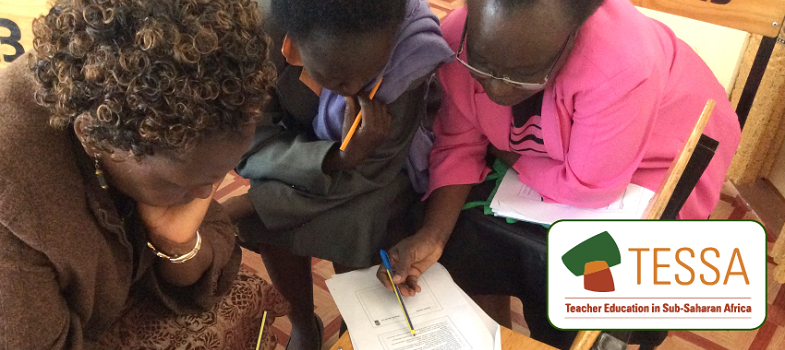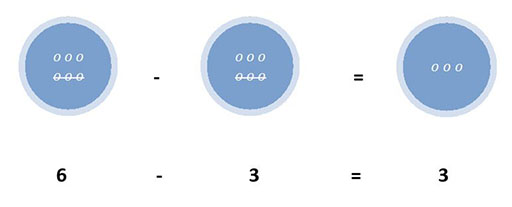5.3 A directory of activities
After deciding upon the lesson’s objectives and all the elements to include, it is time to consider the activities that will best allow pupils to take part in the learning process and achieve these objectives. The activities concerned are activities pupils will do in the lessons and that will engage their mind actively.
It is important to remember that we all have different and preferred ways of learning:
- Some of us, the ‘visual learners’, learn by visualising the information. Sight is their sense of predilection. For them, a picture or a diagram speaks louder than words. They love to explain while drawing or designing models.
- Some of us, the auditory learners, learn by listening. Hearing is their predominant sense. They love words, music and oral communication. They may take very few notes and often choose to remember things by putting them in rhymes or music.
- And finally, some of us, the kinaesthetic learners, learn by moving, touching or doing. They prefer to experiment rather than just follow instructions.
Howard Gardner, a developmental psychologist, defines nine types of intelligence that give different access to learning. This theory, although now controversial, allows us to take into consideration the differences and the needs of individuals when we prepare lessons.
a. Activities for all senses and all types of intelligence and to support the development of a range of skills
In your class, you have children with different learning styles. You may also have children with disabilities and you will need to select activities that will allow them to learn. Pupils with visual impairments are likely to respond well to auditory activities. Those that are hyperactive will have done well in activities for kinaesthetic learners that will enable them to move, and finally the techniques adapted for visual learning will be useful for deaf or partially hearing pupils. Thus, when preparing lessons, it is crucial to plan a range of learning activities that will cover the needs of different learners by catering for the range of learning styles.
By selecting a varied range of learning activities, not only will you take into consideration your pupils’ different learning styles, but you will also ensure that pupils develop a wide range of competencies.
Case study 8: Teachers adapt activities to meet some of their pupils’ needs
8a: Mr Sadio adapts a science lesson for Hadiatou
For his science lesson with the CE2 class in a primary school of Kankan in Guinea, Mr Sadio has decided to use a sorting exercise as used by Ms Ukwuin Case study 1, Section 1 of Module 1.
He read the case study carefully and prepared his lesson plan making sure that all steps were well defined and that all the resources he would need were available. Then, as usual, he thought of ways he would adapt the activity to enable Hadiatou to participate and learn. Hadiatou is blind and is always ready to try new activities. For this activity, he will check that she can manipulate selected objects easily and safely (for her and the objects). Then, he will make her work in pairs with Souaré. Souaré is patient, attentive, and he talks clearly. Before the lesson, Mr Sadio will talk with Souaré and tell him exactly what he expects from him when working with Hadiatou: he will have to guide her towards the tables, describe what is in the tables to her. Then he will accompany her to the yard and pass objects to her so that she can choose two or three objects. When the children will get back to the classroom with their non-living objects, each child will have to describe clearly what he has chosen and why, and to indicate where he will place his objects and why. When it comes to drawing a plant or an animal, Hadiatou will tell Mr Sadio what she wants to present to the class and he will draw it quickly himself so that Souaré will be able to do his own work. Finally, every object will be described in such a way that Hadiatou can take part in the discussion.
8b: The day Gilou got 10 out of 10 in arithmetic. His mother tells the story:
‘That day, Gilou came back from his school in Tsévié, Togo. He was proudly holding his slate. On it were red markings: very good 10 out of 10.
He proudly told me: “Mom I did my sums right! Look! I’ve got 10 out of 10.” I took his slate and looked: it had three circles, the first one with six pebbles of which three were crossed off, the second and the third ones contained three pebbles each. In between the first and the second circle there was the minus sign and the equal sign was between the second and the third circle.’
What had the teacher done for Gilou? Knowing that Gilou found it difficult to set out and resolve sums, he had used a diagram to set the sum while the rest of the class calculated it more traditionally. By using differentiation by task, the teacher enabled Gilou to give a correct answer, thus allowing Gilou to obtain a perfect score like the others. During a later session the teacher helped Gilou to put the number in the boxes:
8c: Mr Sarré, a teacher in Senegal, talks about the spelling test he is preparing for Antoinette
In general, when we do a spelling test and there are children with hearing loss in the class, we must go slowly and we face the pupils. However, Antoinette is profoundly deaf, so I am going to prepare the dictation text with mistakes in and will ask her to identify them while her friends will write the actual text.
8d: Talented children have special needs too
Bintou is a pupil in a state school in Bamako, Mali. She is in Mrs Samaké’s grade 4 class. Bintou works quickly and often finishes the classwork before her friends. At the beginning of the school year, she showed a great sense of curiosity and asked many questions that revealed that she has an excellent memory and quickly identifies abstract relations linking topics from different school subjects. But in recent weeks, Bintou does not participate as readily in class activities and often seems bored. Concerned that this disengagement has a detrimental effect on Bintou’s progress and achievement, Mrs Samaké discusses Bintou’s case with the school counsellor (SC) who asks many questions about the child. He thinks that Bintou is probably a talented child who needs to be motivated. He advises Mrs Samaké to continue using the active learning approach she uses and to engage Bintou by avoiding, for example, to give her repetitive exercises to do. The SC suggests that Mrs Samaké starts creating a bank of graded exercises with answer cards for self-checking and self-assessment. It will allow Bintou (and others) to work at their own pace and at their own level, independently or in groups. He also recommends the use of exercises for Bintou to do research work, to solve problems, and to use her curiosity and creativity. For example, after completing two or three exercises, Bintou can invent similar problems and provide their solutions: this will prove she has understood and the problems created by her could be used for the bank of graded exercises for the class. Furthermore, Bintou could engage in activities allowing her to satisfy her curiosity, such as taking advantage of a reading corner or a mathematics corner when she finishes the training exercises. In all the cases it is important to continue to include Bintou in the class: peer tutoring would enable Bintou and other more advanced pupils to tutor classmates. This could also be a way of meeting her needs.
Activity 22: Activities for all
For this activity, teachers will consider different learning activities and decide which type of activity is best suited for which type of learner.
- Gather the preparation notes of the last two lessons you have prepared.
- Draw a table like the one below, and do the following for each preparation sheet:
- In column 1, note down the activities done by the pupils.
- In column 2, specify for which kind of pupils these activities (visual, auditory or kinaesthetic) are appropriate and the skills that they will develop.
- Finally, in the last column, indicate for which pupils you would require personalising the proposed activity – think about their gender (girl/boy), disability, etc.
| Activity done by pupils | Learning type and skills being developed | Adjustments for … |
| Earth science: Classification of living and non-living objects (TESSA Sc M1 S1 EdC1) | Visual Observation, logic | Deaf children: Use sign language to give instructions or put them in writing in advance Blind children: Choose items that they can touch or make them work in pairs and have their partner give detailed descriptions (brief partners carefully) |
| Maths |
|
|
| Etc. |
|
|
|
|
|
|
|
|
- Reread your list critically. In each lesson, do you have activities that cater for different types of learners? If not, which activities could you introduce so that all types of learners reach the learning objectives?
If possible, share and discuss your ideas with a colleague.
b. Recreational activities
Learning is a very serious task, but as you may have noticed in several chapters of this toolkit, promoting a good atmosphere is conducive to learning (whereas fear hinders learning). Therefore, carefully planned games have their place among the repertoire of learning activities. They often help pupils to learn without effort and help teachers to observe pupils, their understanding of concepts, and their strengths and weaknesses.
Activity 23: Games to learn
This activity will allow teachers to discover several games and consider how they contribute to learning in various school subjects.
- Download the following resources from the TESSA website [Tip: hold Ctrl and click a link to open it in a new tab. (Hide tip)] :
- Literacy (Primary), Module 2, Section 3
- Literacy (Primary), Module 3, Section 1
- , Module 1, Section 1
- Numeracy (Primary)Sciences (Primary), Module 3, Section 1, Resource 2
- Social Studies and the Arts (Primary), Module 1, Section 1
- Life Skills (Primary), Module 1, Section 2.
- For each of these examples, make a note of the game being used and the learning objective(s) reached through play and a relaxed atmosphere.
- If you have other ideas for learning through play, add them to your list.
If possible, share and discuss your ideas with colleagues.
c. Varied and open ways to present the results and outcomes of an activity
Teachers often ask children to present the results or outcomes of activities performed in class or as homework as a piece of writing. However, to stimulate pupils’ interest and develop different skills, alternatives should be considered. It is also recommended to sometimes give pupils, the opportunity to choose how they will present their work.
Activity 24: Activities with varied results
This activity will show teachers in training how creative teachers assign activities that lead to original results/outcomes.
- Download the following resources from the TESSA website:
- Science (Primary), Module 1, Section 4
- Literacy (Primary), Module 1, Section 5, Case study 1
- Numeracy (Primary), Module 3, Section 5, Case study 2 and 3
- For each one of these examples, note the activity and results/outcomes. Also write down your opinions about what was offered by the teachers to the pupils.
- Alone or with colleagues, brainstorm ideas of activities and the way they impact the learning experience. (See TESSA key resource ‘Using mind maps and brainstorming to explore ideas’ on the TESSA website).
TESSA resources contain many examples of activities that lead to diverse results/products: a drawing, a poster, a sketch, a dance, a play, a debate, a presentation, or, as in the case studies that you have just read, real outcomes useful for the school and the community.
5.2 Learning through small steps




